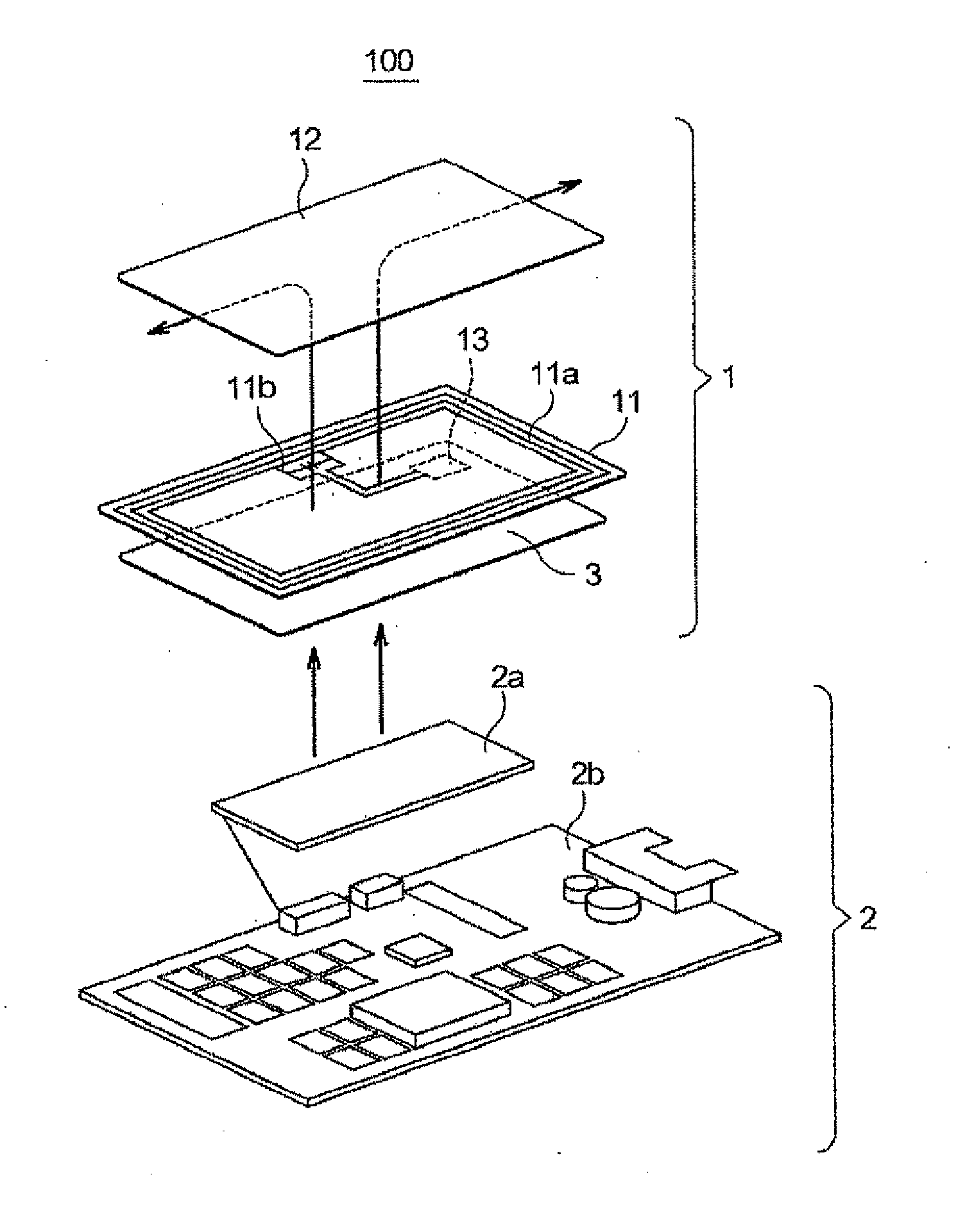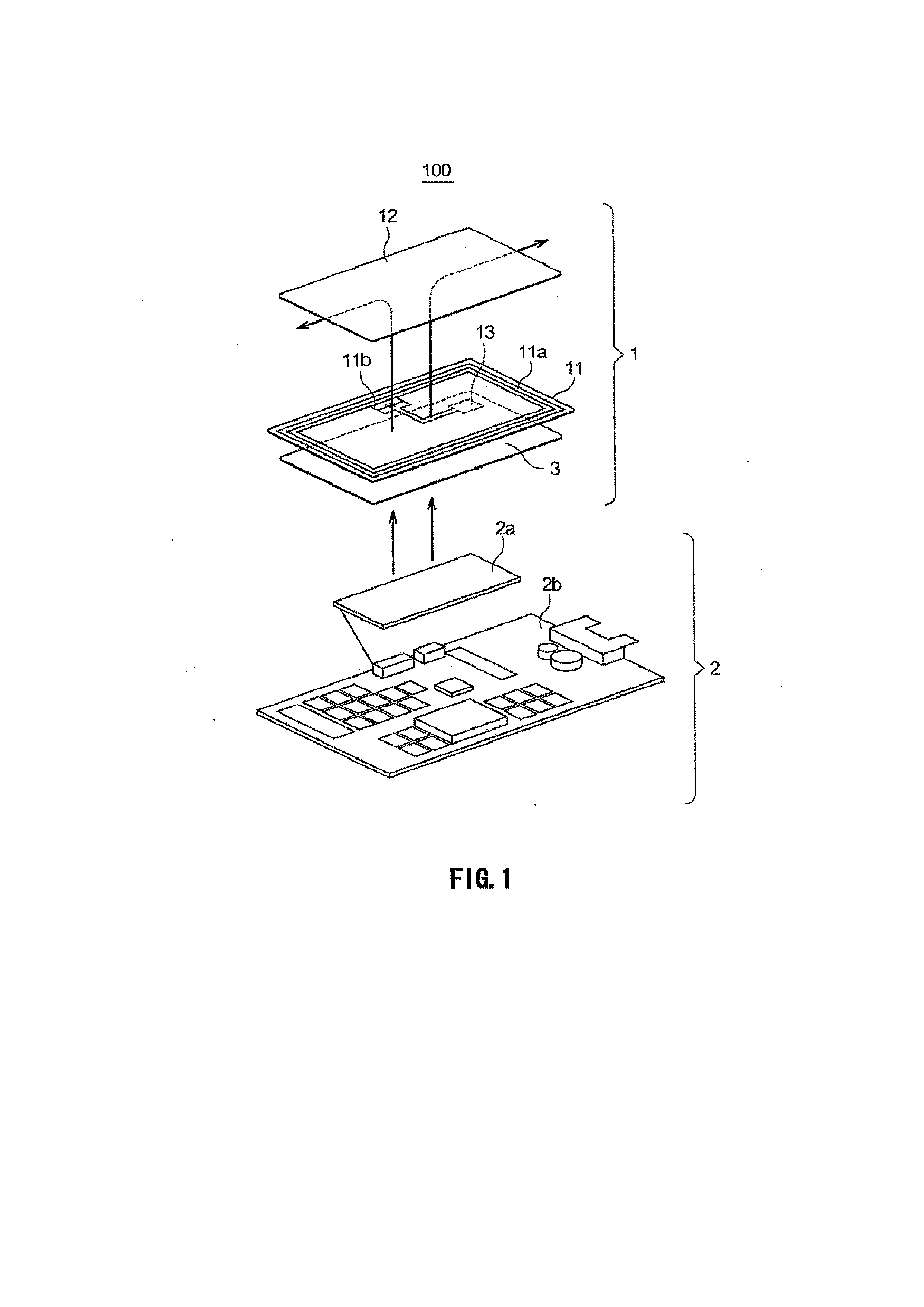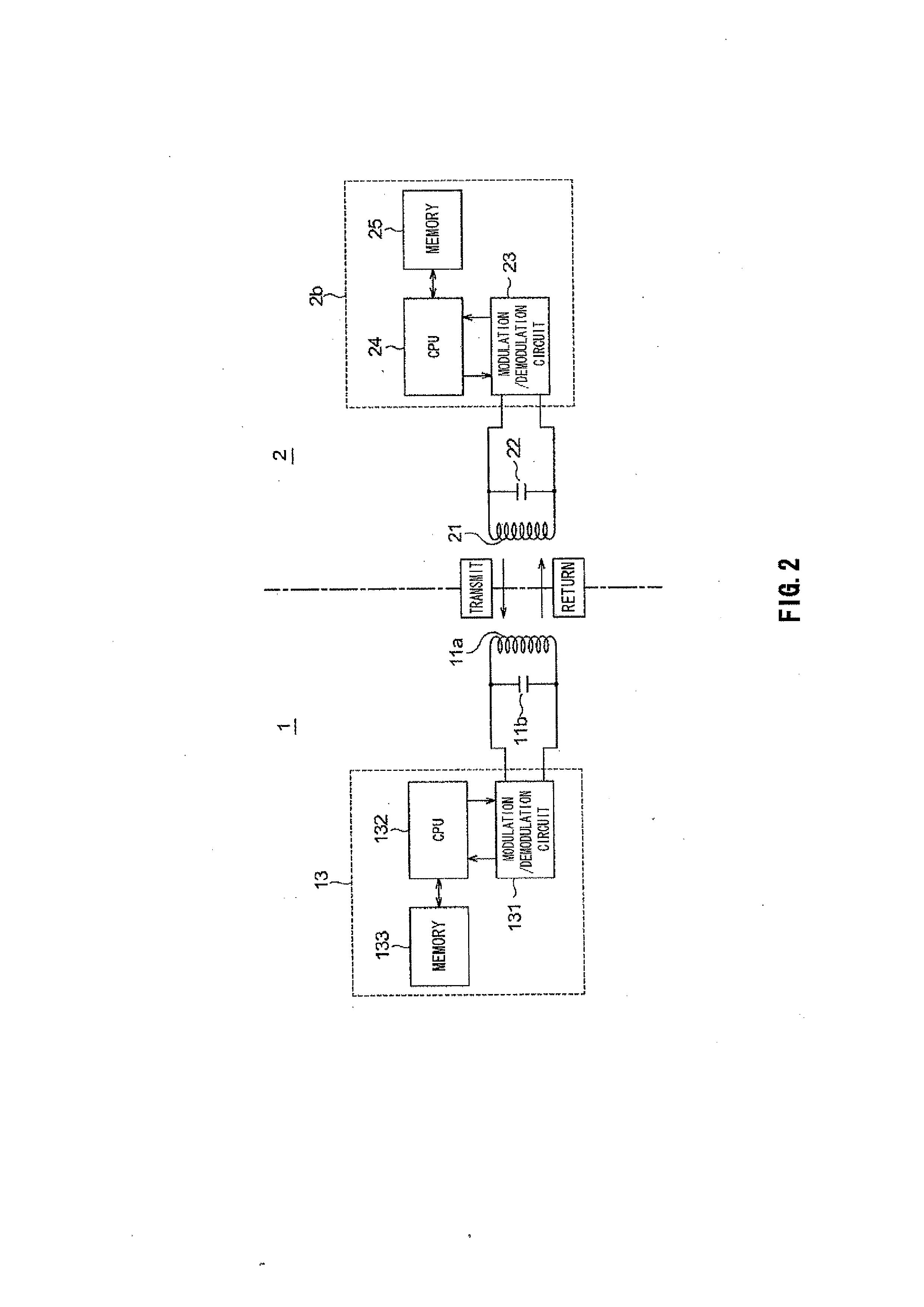Antenna device and communication device
- Summary
- Abstract
- Description
- Claims
- Application Information
AI Technical Summary
Benefits of technology
Problems solved by technology
Method used
Image
Examples
example 1
[0064]As a specific example of an antenna module to be incorporated in a portable phone or the like, an antenna module as follows was used. That is, as the antenna coil 11a, one fabricated by a patterning process on a flexible printed board 11c having an outer shape of 36 [mm]×29 [mm] and a thickness of 0.09 [mm] as depicted in FIG. 4A was used. Also, as the magnetic sheet 12, a ferrite having an outer shape of 36 [mm]×29 [mm] and μ′=119 and μ″=1.33 with a frequency of 13.56 MHz as depicted in FIG. 4B was used. Also, the flexible printed board 11c where the antenna coil 11a is fabricated and the magnetic sheet 12 are assumed to be coupled via an acrylic-based ADH sheet having a thickness of 0.3 mm as an adhesive.
[0065]First, FIG. 5 depicts the results of measurement of the temperature characteristic of the inductance of each antenna coil 11a in the case of the single flexible printed board 11c without having the magnetic sheet 12 coupled thereto, the number of windings being 3, 5, a...
PUM
 Login to View More
Login to View More Abstract
Description
Claims
Application Information
 Login to View More
Login to View More - R&D
- Intellectual Property
- Life Sciences
- Materials
- Tech Scout
- Unparalleled Data Quality
- Higher Quality Content
- 60% Fewer Hallucinations
Browse by: Latest US Patents, China's latest patents, Technical Efficacy Thesaurus, Application Domain, Technology Topic, Popular Technical Reports.
© 2025 PatSnap. All rights reserved.Legal|Privacy policy|Modern Slavery Act Transparency Statement|Sitemap|About US| Contact US: help@patsnap.com



